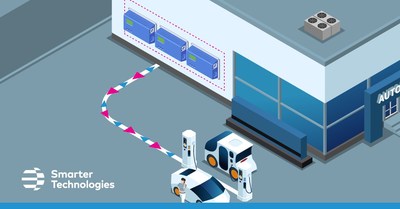LEICESTER, England, June 24, 2022 /PRNewswire/ — Transport is currently the largest emitting sector of the UK economy, and over half the nation’s transport emissions (55%) come from cars. With the UK working towards net zero carbon emissions by 2050, electric vehicles (or EVs) offer one method of helping reach this target. But with EVs poised to place significant demands on the National Grid, using smart charging or vehicle-to-grid technologies is needed to lower peak energy demands.
The impact of EVs on the overall energy system will depend on when and how EV users charge their vehicles. It will be a massive asset to the energy system if EVs use smart charging technology and provide flexibility to the grid. Smart charging also benefits EV owners, who can take advantage of off-peak hours and charge their vehicles when electricity prices are low. In addition, the batteries in the vehicles could become an asset to the national grid, as they have the potential to be used for grid balancing.
Vehicle to Grid (V2G) charging
The concept of V2G is an extension of smart EV charging. The basic premise is that when supply is low, and demand is high, EVs connected to the grid to charge can release power back into the grid. Vehicle owners or building managers can then be paid for this balancing service.
Bi-directional charging
One of the solutions to an excess or deficit of energy can be to divert it to and store it in EV batteries. The surplus amount of power generated is preserved in the battery storage system and retrieved in the absence of renewable sources. These renewable-based DC charging systems integrate power from sun, wind and battery energy storage to provide an uninterruptible power supply. With a bidirectional converter, power can move both ways and balance the increasing mismatch in electrical usage and renewable generation.
The success of a smart EV charging system depends on having a Building Energy Management System (BEMS) capable of collecting and analysing and acting on energy data in real time. The BEMS can help businesses and communities plan, develop and install electrical infrastructure, support load management, and analyse charging configurations.
Meeting EV charging requirements will necessitate significant investment in the energy system. But, with the right planning, smart technology, and regulatory measures, EVs can become an asset to the energy system, consumers, and the environment.



